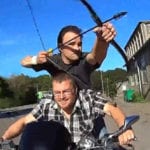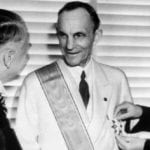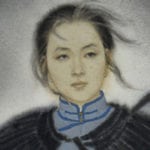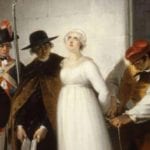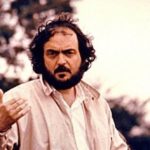 History
History  History
History  Weird Stuff
Weird Stuff 10 Superstitious Beliefs That Once Consumed Entire Cultures
 History
History 10 Bizarre Friendly Fire Incidents in Military History
 Technology
Technology 10 Modern Technologies That Accidentally Imitate Ancient Magic
 Mysteries
Mysteries 10 Mysteries of the Human Genome
 Weird Stuff
Weird Stuff 10 Things So Rare They’ve Only Been Found Once
 History
History 10 Legends Whose Last Moments Undid Their Glory
 Health
Health 10 Futuristic Ideas to Treat Common Medical Problems
 Weird Stuff
Weird Stuff Ten Surreal Attempts to Reverse Baldness
 Facts
Facts 10 U.S. Government Contingency Plans for the Unthinkable
 History
History 10 Odd Things Colonial Americans Kept at Home
 Weird Stuff
Weird Stuff 10 Superstitious Beliefs That Once Consumed Entire Cultures
 History
History 10 Bizarre Friendly Fire Incidents in Military History
Who's Behind Listverse?

Jamie Frater
Head Editor
Jamie founded Listverse due to an insatiable desire to share fascinating, obscure, and bizarre facts. He has been a guest speaker on numerous national radio and television stations and is a five time published author.
More About Us Technology
Technology 10 Modern Technologies That Accidentally Imitate Ancient Magic
 Mysteries
Mysteries 10 Mysteries of the Human Genome
 Weird Stuff
Weird Stuff 10 Things So Rare They’ve Only Been Found Once
 History
History 10 Legends Whose Last Moments Undid Their Glory
 Health
Health 10 Futuristic Ideas to Treat Common Medical Problems
 Weird Stuff
Weird Stuff Ten Surreal Attempts to Reverse Baldness
 Facts
Facts 10 U.S. Government Contingency Plans for the Unthinkable
10 Famous People Who Were Secretly Badass Soldiers
A lot of famous people have served their countries well when the need arose. Some stories are well-known—like Ernest Hemingway drawing on his wartime experiences to write A Farewell to Arms or Elvis joining the US Army when he was one of the most popular acts in the world. However, there are plenty of stories out there about soldiers with distinguished military careers who managed to achieve fame by other means.
10 Desmond Llewelyn
Most people will remember Desmond Llewelyn as the iconic Q from the James Bond series, providing Agent 007 with all the gadgets he needed for his missions. Llewelyn appeared in 17 Bond films, more than any of the actors who actually played James Bond. But before he took on the task of overseeing the MI6 gadget lab, Llewelyn fought in the Royal Welch Fusiliers during World War II.
Llewelyn was studying acting at the Royal Academy of Dramatic Art in London when the war broke out. He enlisted in the Fusiliers, an infantry regiment, where he became second lieutenant. In 1940, while on a mission in France, Llewelyn was captured by the Germans and remained a prisoner of war until 1945. Most of that time was spent in Colditz, the infamous castle that was turned into a POW camp for problem soldiers who tried to escape from other prisons.
Despite its fearsome reputation, Colditz Castle actually had a high number of attempted and successful escapes. To counter this, the Germans relied on cruel prison tactics to act as a deterrent, trying to sap every last ounce of strength from their prisoners.
Llewelyn recalled having to subsist on bits of rotten potatoes and whatever the prisoners could find discarded in the trash. It wasn’t unusual for a soldier to drop dozens of pounds. Even the lightest exertion, such as climbing a few stairs, was enough to cause them to black out.
9 Yogi Berra
Baseball Hall of Famer Yogi Berra is remembered as much for his hugely successful career with the New York Yankees as for his penchant for spouting off memorable, humorous one-liners. What is often overlooked, however, is his stellar military record during World War II.
In 1943, Berra was a 17-year-old kid playing in the minor leagues for the Norfolk Tars. He was on the verge of getting called up to the majors but instead enlisted in the US Navy and played a pivotal role during the Normandy Invasion. He served as a gunner’s mate, and on D-day, he was aboard the USS Bayfield, the flagship for the landing on Utah Beach.
Yogi Berra was a “rocketboat man.” In navy terms, those were crewmen aboard the fast gunships that were front and center on D-day. It was a top secret, highly dangerous mission that required special training. Yogi volunteered because he liked the word “rocket.”
At first, he didn’t even know where the mission was taking place. After training in England, Berra thought he was headed for Japan. But on June 6, 1944, he was aboard a gunship with a crew of six attacking Utah Beach. Armed with rockets and machine guns, the rocketboats had to draw fire away from Allied forces and take down enemy planes.
Berra was shot at plenty of times but wasn’t hit. He received several commendations for bravery. Just a few years ago, he was also presented with the Bob Feller Act of Valor Award.
8 Bob Ross
Most of us remember painter Bob Ross for his program on PBS, The Joy of Painting. His signature calm, soothing voice and sweet ‘fro attracted millions of people to watch him paint “happy little trees” even though some of them had no intention of ever picking up a brush themselves.
However, most of his audience might be surprised to find out that Ross also enjoyed a lengthy career in the US Air Force. He enlisted at age 18 and started out as a technician. Eventually, Ross became a sergeant. In his own words, Ross was the one “who makes you scrub the latrine, the guy who makes you make your bed, the guy who screams at you for being late to work.”
Being mean and assertive was part of the job description, but it wasn’t something that Ross particularly enjoyed. He promised himself that if he ever found a career that got him away from military life, he would never scream again.
The air force provided him with that opportunity when it stationed him in Alaska. That was when native Floridian Bob Ross saw snow and mountains for the first time, and he felt inspired to paint.
He developed his trademark quick painting style so that he could work between breaks, and his landscapes were popular enough to sell as fast as Ross could paint them. This convinced Ross that he could have a successful career as an artist, so he retired after 20 years in the air force with the rank of master sergeant.
7 Roger Aytoun
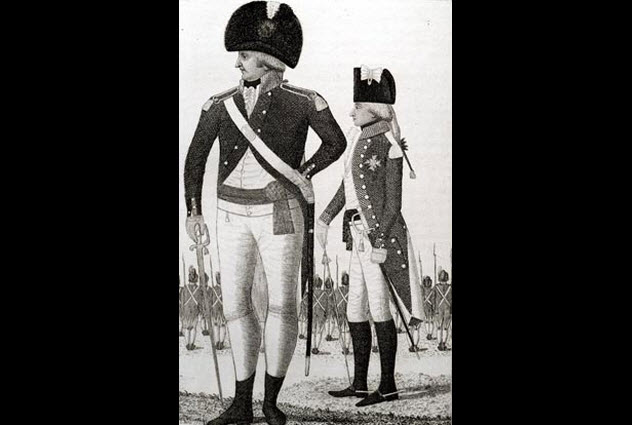
Roger Aytoun, better known as “Spanking Roger,” was an 18th-century soldier and local Manchester legend who gained renown for his love of drinking and fighting. Today, Aytoun Street and the Spanking Roger Pub are named in his honor.
He amassed a fortune after marrying Barbara Minshull, a rich widow who granted him a large estate called Hough Hall. Aytoun came to her attention during one of the annual Kersal Moor races.
It was traditional for the male runners to compete in the nude. Roger’s strong, 193-centimeter (6’4″) physique caught the eye of the heiress, and the two were married soon afterward. According to legend, Aytoun was so drunk at their wedding that his friends had to hold him upright.
His nickname came from his love of bare-knuckle boxing. When he came to Manchester as part of the Scottish Dragoons, another tale said that he would often make a bet with his opponents. If they lost, they had to enlist in the Dragoons. Roger usually won.
Spanking Roger’s love of drinking didn’t stop him from being a good soldier. He fought during the Siege of Gibraltar, where he was made captain and given command of his own regiment. However, after the war, he went back to Manchester and had no problem drinking away his entire fortune.
6 J.D. Salinger
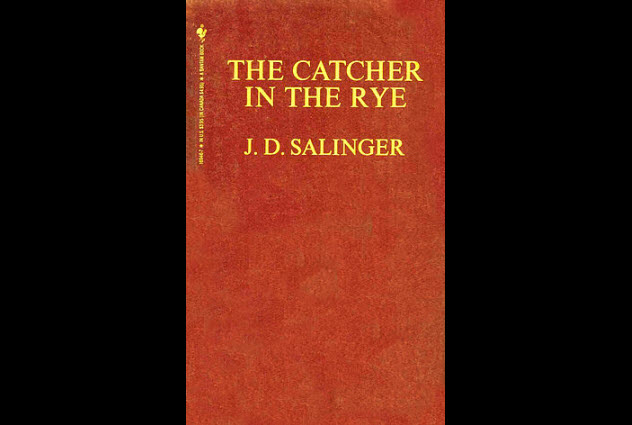
Jerome David Salinger—better known by his pen name, J.D. Salinger—was the American writer most people know from his highly successful, highly controversial novel The Catcher in the Rye. His experiences during World War II had a profound effect not only on him but also on the novel’s protagonist, Holden Caulfield.
Before the war, Salinger had attempted to publish several short stories, including “Slight Rebellion off Madison” which was his first story featuring Holden Caulfield. Although it was eventually published on its own, the short story would later become a chapter of Salinger’s magnum opus, which featured a noticeably different Holden Caulfield.
Those closest to him knew that Salinger had dealt with PTSD for most of his life. War had transformed his writing as well as Holden, who was an extension of the author.
As a member of the US 12th Infantry Regiment, 4th Division, Salinger took part in some of World War II’s bloodiest battles. He was at the Battle of Hurtgen Forest and the Battle of the Bulge. He also fought on Utah Beach during D-day.
After the Normandy Invasion, Salinger marched into a liberated Paris and enjoyed his only pleasant experience of the war—drinking at the Ritz with one of his idols, Ernest Hemingway, who was working as a war correspondent. Afterward, Salinger’s proficiency in German and French got him transferred to counterintelligence as a POW interrogator. He finished his tour of duty as a staff sergeant.
5 Billy Butlin
The name Billy Butlin might not ring a bell to anyone outside the UK. But to Brits, he is synonymous with holiday camps that have become a part of British culture. After several years of successfully running traveling fairs and amusement parks, Billy opened his first eponymous Butlin’s Holiday Camp near Skegness, Lincolnshire, in 1936. Over the next decades, Billy continued to open more resorts as he turned Butlin’s Holiday Camps into an empire.
He took a break during World War II when many of his camps became shore establishments for the Royal Navy. Butlin also offered his services to the Ministry of Supply to improve morale among munitions factory workers. For this, Butlin received an MBE after the war. But his most impressive military contribution was his service in World War I in the bantam battalions.
At the start of the war, standard enlistment requirements applied: Men had to be 160 centimeters (5’3″) or taller. But eventually, groups of short soldiers, known as bantam battalions, were formed. They became known for their bravery and ferocity, with many of the men feeling like they had something to prove to the taller soldiers.
One particular battalion out of Glasgow was nicknamed the “Devil Dwarfs” for this reason. A short man himself, Butlin served in one of these bantam battalions after lying about his age. He was only 15 when he enlisted.
4 Blaine Sexton
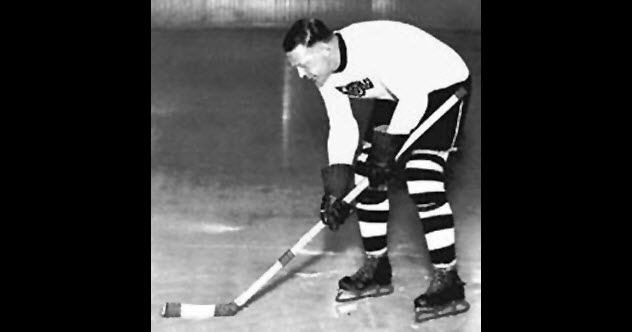
Blaine Nathaniel Sexton was one of the early stars of hockey. After starting his career with the Windsor Swastikas in Canada, Sexton made the transition to England. There, contemporary newspapers hailed him as one of the best players in Europe for almost two decades.
In 1950, he was inducted into the British Ice Hockey Hall of Fame. Today, he is regarded as instrumental in popularizing the sport not only in the United Kingdom but throughout Europe.
Of course, this might not have happened if Sexton hadn’t served in World War I. After the outbreak of the war, he joined the Canadian Expeditionary Force and was posted to England in 1916 as an infantry officer. After he was wounded twice during active service, Sexton was transferred to the cavalry where he became army saber champion.
During the time that he was stationed in the UK, Sexton met and married an English woman. After the war, they moved back to Canada, but she eventually persuaded him to return to the UK permanently. There, Sexton earned a bronze medal for the British hockey team at the 1924 Winter Olympics and later started his own team, the London Lions.
3 Donald Pleasence
Actor Donald Pleasence is probably best remembered by audiences as psychiatrist Sam Loomis from the Halloween horror franchise. He also portrayed the first on-screen and arguably the most iconic version of Bond supervillain Ernst Blofeld. But his most acclaimed role was that of Flight Lieutenant Colin Blythe (aka “The Forger“) in The Great Escape.
His role as a prisoner of war in The Great Escape was a curious case of art imitating life. Almost 20 years earlier, Pleasence was in a similar situation during World War II. As a pacifist, he initially remained a conscientious objector and instead chose to work in the lumber industry to help the war effort. Later, he changed his mind and enlisted in the Royal Air Force.
As part of a bomber crew, Pleasence flew 60 successful missions against the Germans. Eventually, his luck ran out. In 1944, his plane was shot down over France, and Pleasence was imprisoned at the Stalag Luft I POW camp near the town of Barth. He spent the next year enduring mental and physical torture at the hands of cruel Nazi guards until the prison camp was liberated by Russian troops.
Two decades later, Pleasence put his wartime experience to good use by offering advice to director John Sturges on the set of The Great Escape. Although initially rebuffed, he became Sturges’s trusted consultant once Sturges learned that Pleasence had been a real POW during the war.
2 Charles Older

Charles Older was primarily known within legal circles. He enjoyed a successful, 20-year career on the bench of the Los Angeles Superior Court after being appointed by Ronald Reagan in 1967.
Older had his brush with fame in 1970 when he presided over one of the biggest court cases in US history—the Manson trials. Although he had only served on the Superior Court for a few years at that point, Older was assigned the case after Charles Manson successfully filed an affidavit of prejudice against the original judge, William Keene.
During the trial, Older had to contend with a lot of unusual circumstances: the media circus, the constant requests for interviews, chanting by the defendants during the trial, and even an attempted attack from Charles Manson. None of this was likely to faze him, though, as Older was one of America’s greatest flying aces.
When World War II broke out, Older underwent flight training in the US Navy and then served with the Marine Fighting Squadron One. Eventually, he was accepted into the American Volunteer Group, better known as the “Flying Tigers.”
The Flying Tigers were American pilots who were part of the Chinese Air Force. After training in Burma, they had to defend China from Japanese forces. They were deployed days after Pearl Harbor, and Older became one of the top aces with 10 victories. After returning to the US, Older reenlisted in the air force and returned to China with another squadron. He almost doubled his record, finishing with 18.25 victories.
1 Art Kane
Art Kane was an influential fashion and music photographer who was most successful during the 1950s, 1960s, and 1970s. He was responsible for some of the most iconic portraits that featured the leading musicians of the era.
Without a doubt, his most successful picture was called A Great Day in Harlem from 1958. It was a school portrait–type photograph featuring 57 of the greatest jazz musicians in history.
Before his photography career took off, Kane also served his country during World War II. He put his artistic skills to good use as part of the 23rd Headquarters Special Troops—better known as the Ghost Army.
Kane was attending Cooper Union when he got drafted. Already a talented artist, he volunteered for a camouflage battalion. Kane was expecting to paint jungle patterns on trucks or something else equally tedious.
But the army had other plans for him. The Ghost Army was a tactical deception unit whose goal was to deceive the enemy using actors, fake radio transmissions, sound trucks, inflatable tanks, and more.
Kane was part of a group who acted as decoys to deflect enemy artillery from advancing American troops. The Ghost Army organized dozens of successful deceptions and was considered a success, although parts of its inner workings remain classified to this day.
Radu is into weird science and history. Share the knowledge on Twitter or check out his website.

